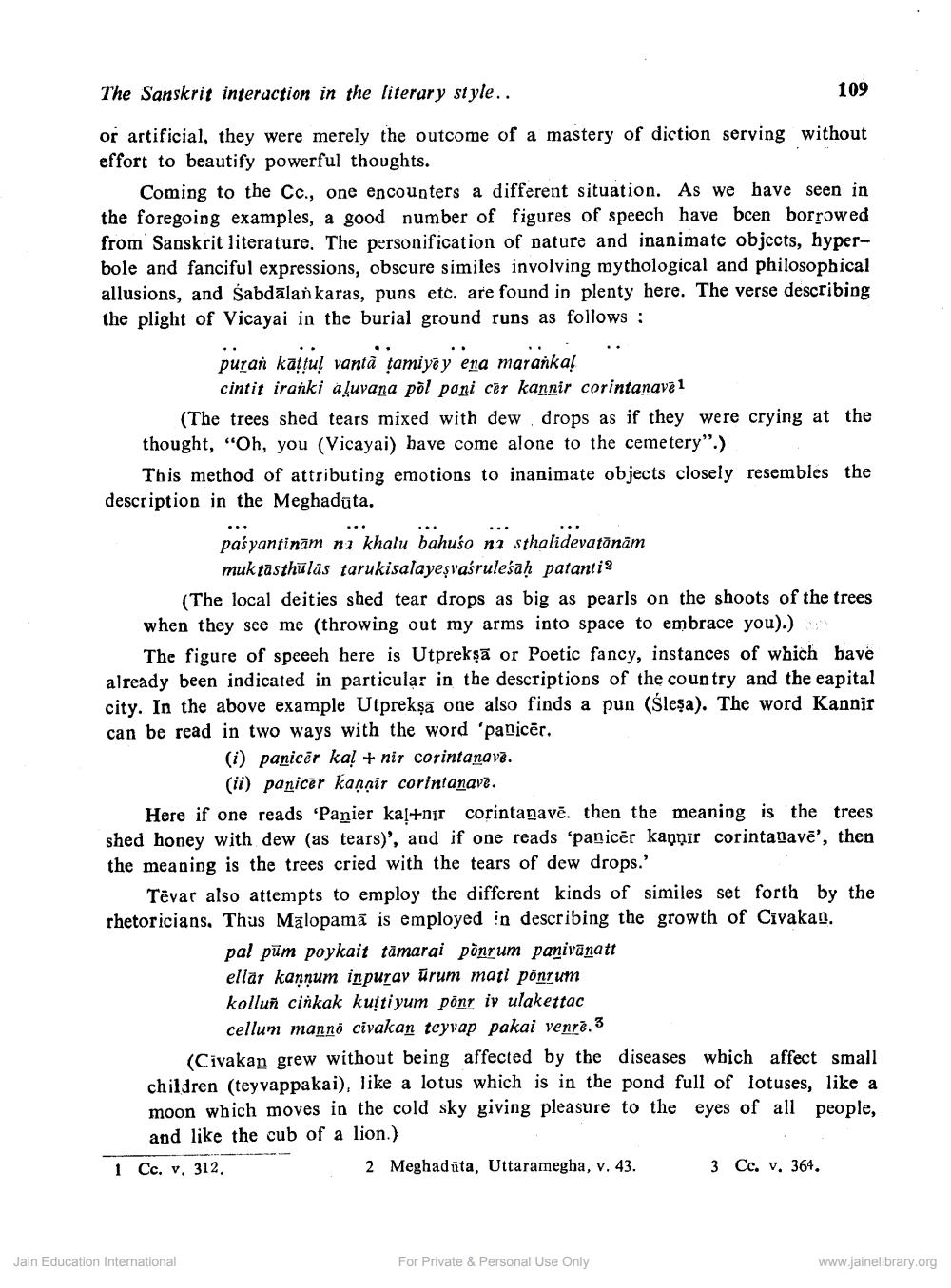________________
The Sanskrit interaction in the literary style..
109
or artificial, they were merely the outcome of a mastery of diction serving without effort to beautify powerful thoughts.
Coming to the Cc., one encounters a different situation. As we have seen in the foregoing examples, a good number of figures of speech have bcen borrowed from Sanskrit literature. The personification of nature and inanimate objects, hyperbole and fanciful expressions, obscure similes involving mythological and philosophical allusions, and Sabdālan karas, puns etc. are found in plenty here. The verse describing the plight of Vicayai in the burial ground runs as follows:
puran kattuļ vantà tamiyay ena maranka!
cintit iranki aļuvana pòl pani cēr kannir corintanava 1 (The trees shed tears mixed with dew drops as if they were crying at the thought, "Oh, you (Vicayai) bave come alone to the cemetery”.)
This method of attributing emotions to inanimate objects closely resembles the description in the Meghadūta.
paśyantinām na khalu bahuśo na sthalidevatānām
muk tasthulas tarukisalayeșvasruleśaḥ patantis (The local deities shed tear drops as big as pearls on the shoots of the trees when they see me (throwing out my arms into space to embrace you).)
The figure of speeeh here is Utprekşā or Poetic fancy, instances of which have already been indicated in particular in the descriptions of the country and the eapital city. In the above example Utprekşā one also finds a pun (Śleşa). The word Kannir can be read in two ways with the word 'panicēr.
(i) panicër ka! + nir corintanave.
(ii) panicër kannir corintanave. Here if one reads "Panier ka[+nir corintanavē. then the meaning is the trees shed honey with dew (as tears)', and if one reads 'panicēr kannir corintahavē', then the meaning is the trees cried with the tears of dew drops.'
Tēvar also attempts to employ the different kinds of similes set forth by the rhetoricians. Thus Mālopamā is employed in describing the growth of Civakan.
pal püm poykait tamarai ponrum panivānatt ellar kannum inpuray ūrum mati põntum kolluñ cinkak kuţtiyum põnr iv ulakettac
cellum manno civakan teyyap pakai venre. 3 (Civakan grew without being affected by the diseases which affect small children (tey vappakai), like a lotus which is in the pond full of lotuses, like a moon which moves in the cold sky giving pleasure to the eyes of all people,
and like the cub of a lion.) 1 Cc. v. 312.
2 Meghadūta, Uttaramegha, v. 43. 3 Cc. v. 364.
Jain Education International
For Private & Personal Use Only
www.jainelibrary.org




